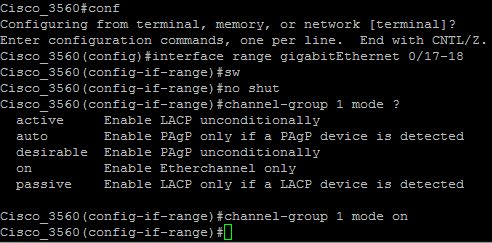In this lab I used a Cisco Catalyst WS-C3750G-24TS switch [IOS 12.2(25)SEE3] and a Cisco Catalyst WS-C3560G-24TS switch [IOS 12.2(40)SE]. I also physically connected GigabitEthernet 1/0/17 on the Catalyst 3750G to GigabitEthernet 0/17 on the Catalyst 3560G; I did the same for GigabitEthernet 1/0/18 and GigabitEthernet 0/18 respectively. At this point I have two GigabitEthernet connections between the switches. Below I demonstrate configuring a basic static etherchannel.
I first configure the Catalyst 3750G switch:
Next I configure the Catalyst 3560G:
Below you can see that the port-channel is up; notice I didn’t have to do a “no shut” on the port-channel as is the case with Force10 switches.
To configure PAgP or LACP instead, I could have just selected the appropriate option as demonstrated above with the “channel-group 1 mode ?” command. Additionally, I would have had to apply the following command to all interfaces: “channel-protocol [lacp or pagp]”.





 Twitter
Twitter LinkedIn
LinkedIn Youtube
Youtube RSS
RSS
Pingback: Humair’s Blogs » Blog Archive » Creating a LAG between an ESXi vSwitch and a Physical Switch